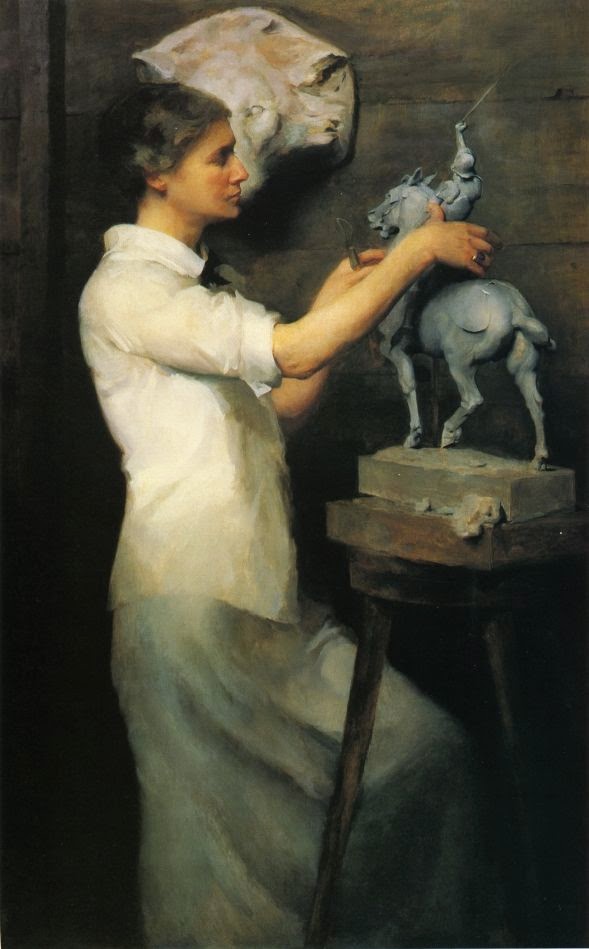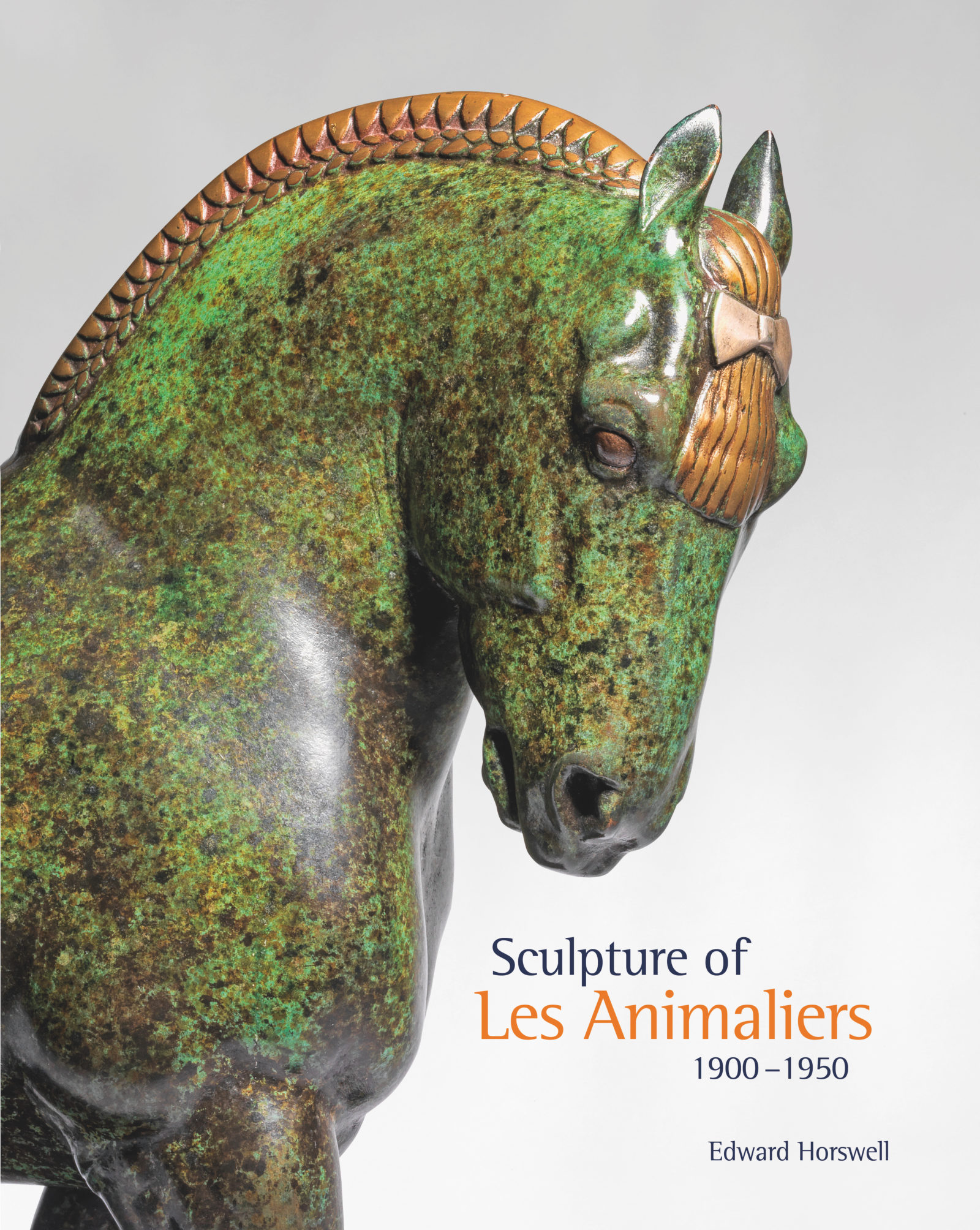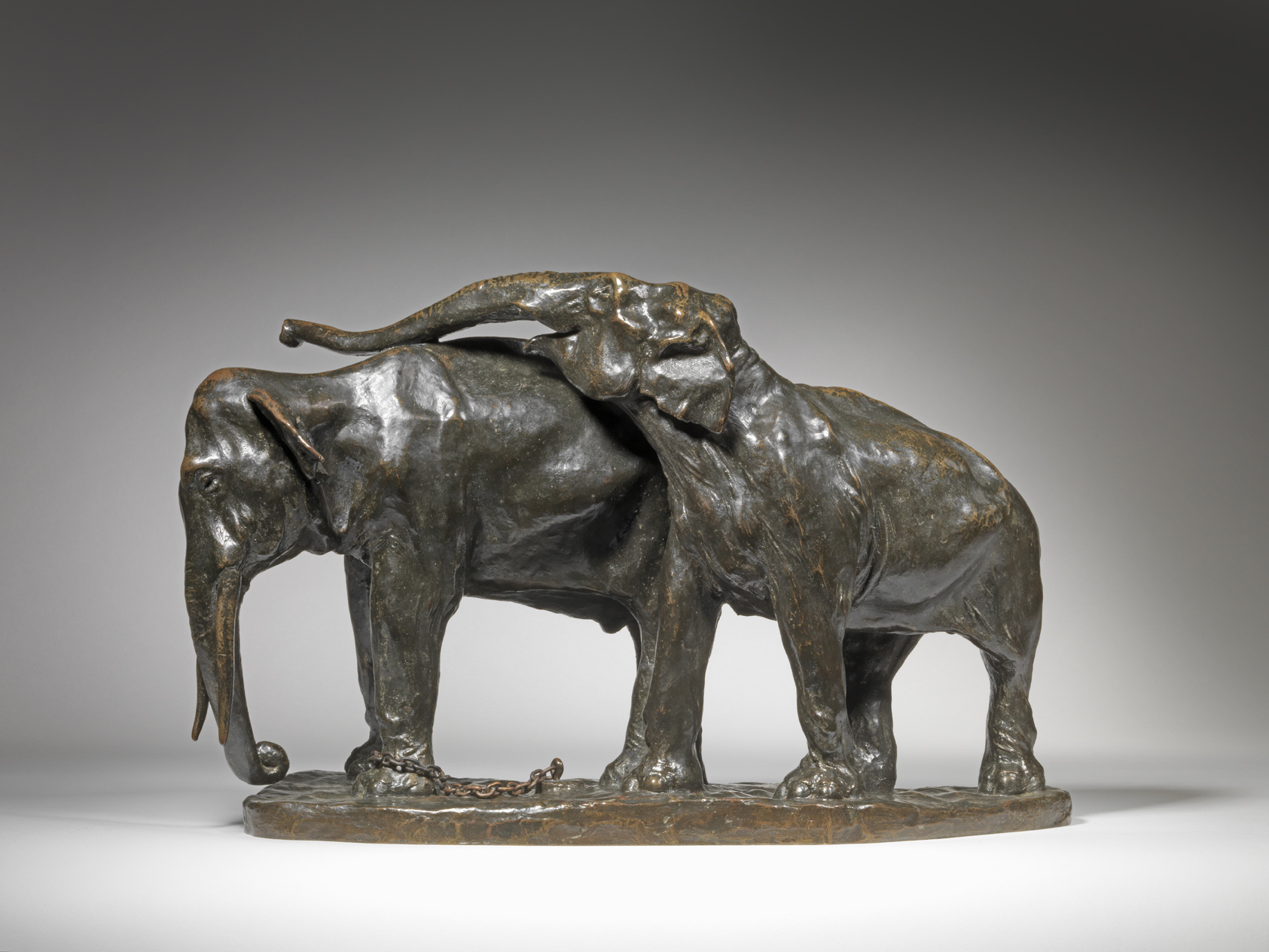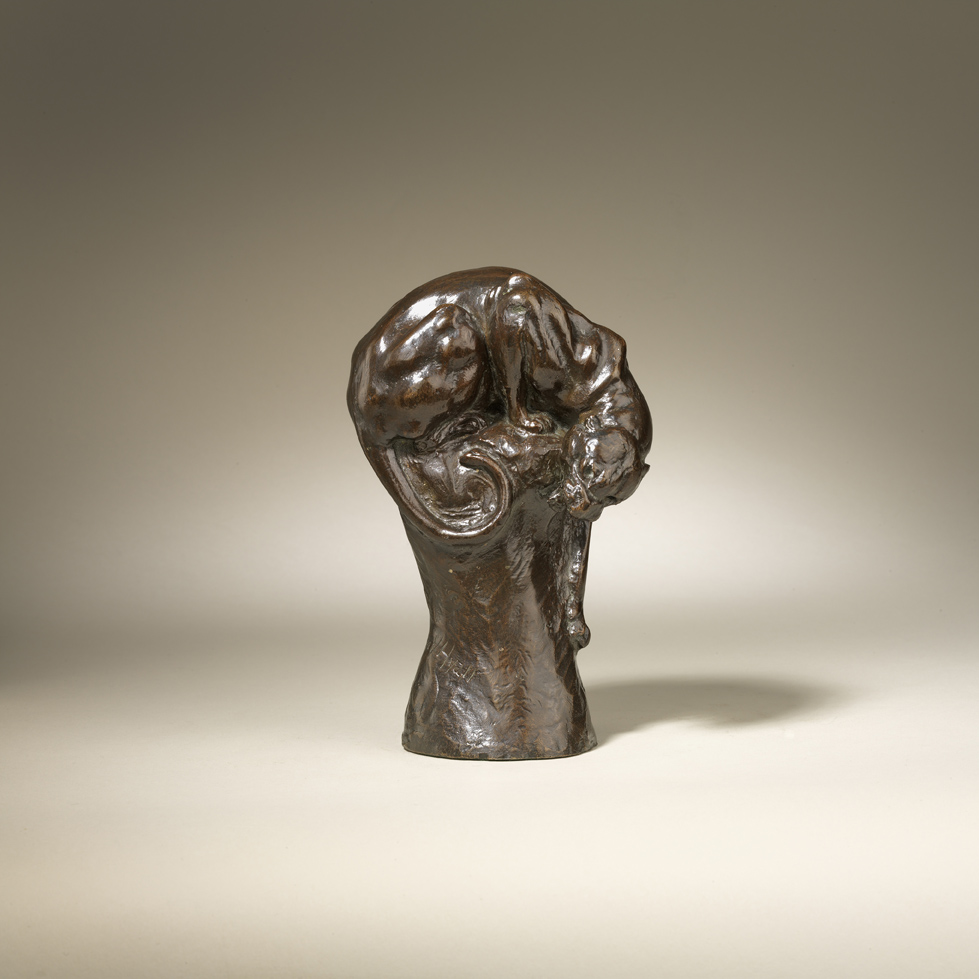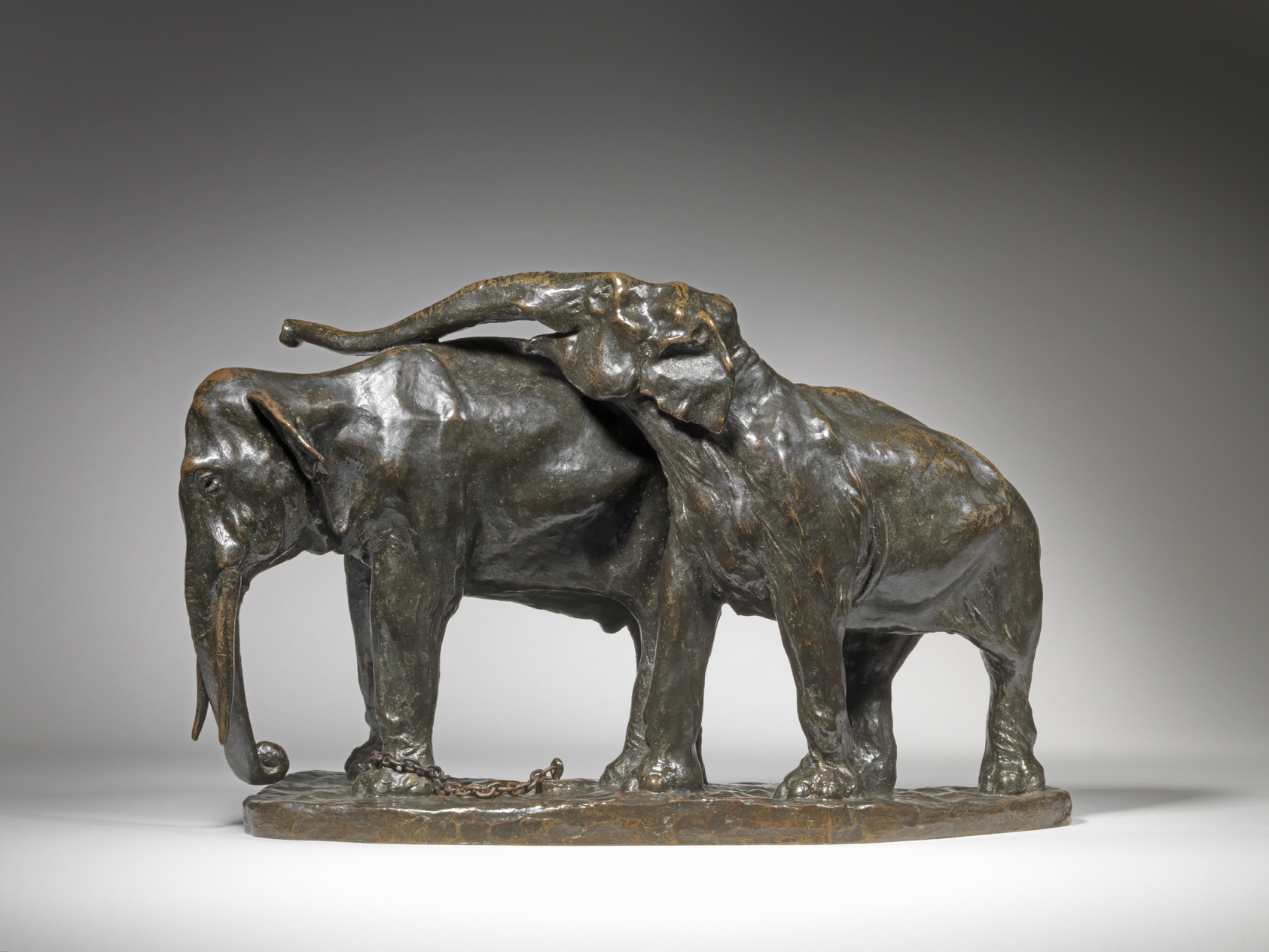
Renowned for her expert anatomical work, Huntington once explained that “animals have many moods, and to represent them, is my joy.”
During the first two decades of the 20th century, Hyatt Huntington became famous for her animal sculptures, which combine vivid emotional depth with skilful realism. In 1915, she created the first public monument by a woman to be erected in New York City. Her Joan of Arc, located on Riverside Drive at 93rd Street, is the city’s first monument dedicated to a historical woman
In 1923 Hyatt married Archer Milton Huntington who was a noted author, philanthropist, and founder of the Hispanic Society of America in New York. The couple lived at 1083 Fifth Avenue, where Hyatt had a studio atop a wing of the building. Like others of their society, the couple began to visit coastal South Carolina in the 1920s. They acquired several plantations near Murrells Inlet, which, beginning in 1932, were transformed into Brookgreen Gardens, a sculpture museum and wildlife refuge spanning over 9,000 acres. It was the first outdoor sculpture park in the United States and an ideal spot for showcasing Huntington’s work as well as the American figurative sculpture they collected.
Anna Vaughn Hyatt spent her childhood summers on a Maryland farm, which nurtured her fascination with animals, particularly horses. Influenced in part by her older sister, Harriet, a sculptor, Hyatt turned to modelling animals at the age of nineteen. She studied with Henry Hudson Kitson in Boston; when she was twenty-four, her first one-woman show, consisting of forty animal sculptures, was held at the Boston Arts Club.
In 1902 she began her studies at the Art Students League under Hermon MacNeil and Gutzon Borglum. A product of her two-year collaboration with sculptor Abastenia St.Leger Eberle, the bronze Men and Bull was exhibited at the St.Louis Exhiibition in 1904. In 1907 Hyatt travelled to France, where she had a studio in Auvers-sur-Oise, and a year later she went to Italy. In Paris she received an honourable mention at the Salon of 1910 for a model of Joan of Arc; a larger, revised version, cast in bronze, was erected on Riverside Drive in New York City in 1915 and won the Purple Rosette from the French government.
Hyatt’s other works include Diana of the Chase, winner of the Saltus Medal of the National Academy of Design in 1922; El Cid Compeador, erected in Seville in 1927; Bulls Fighting, winner of the Shaw Prize of the National Academy of Design in 1928; and Greyhounds Playing, winner of the Widener Gold Medal of the Pennsylvania Academy of the Fine Arts in 1937.
In 1923 Hyatt married Archer M.Huntington, a poet and philanthropist, and in 1931 they founded Brookgreen Gardens, near Charleston, South Carolina. Originally intended as a nature retreat and a sculpture garden for her works, it was enlarged to include works of other sculptors.
Renowned for her expert anatomical work, Huntington once explained that “animals have many moods, and to represent them, is my joy.” In 1922 she was elected an academician of the National Academy of Design and a chevalier of the French Legion d’Honneur. A retrospective of her work was held at the American Academy of Arts and Letters in 1936, and in 1940 she was awarded a special medal from the National Sculpture Society.
Artworks
View all Artworks >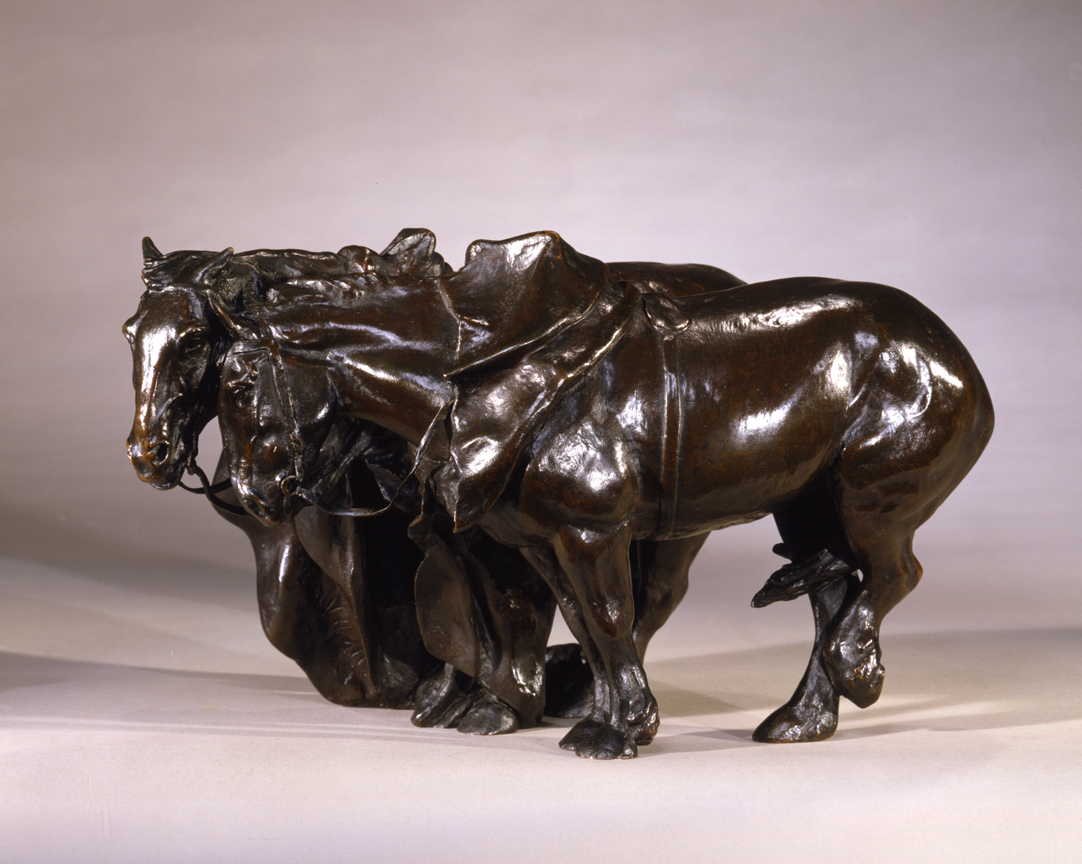
Winter Noon, c. 1903
Anna Hyatt-Huntington
A rare, good quality, early twentieth century bronze model of two Horses entitled ‘Winter Noon’ by Anne Vaughn Hyatt Huntington (American, 1876-1973). This bronze was […]


